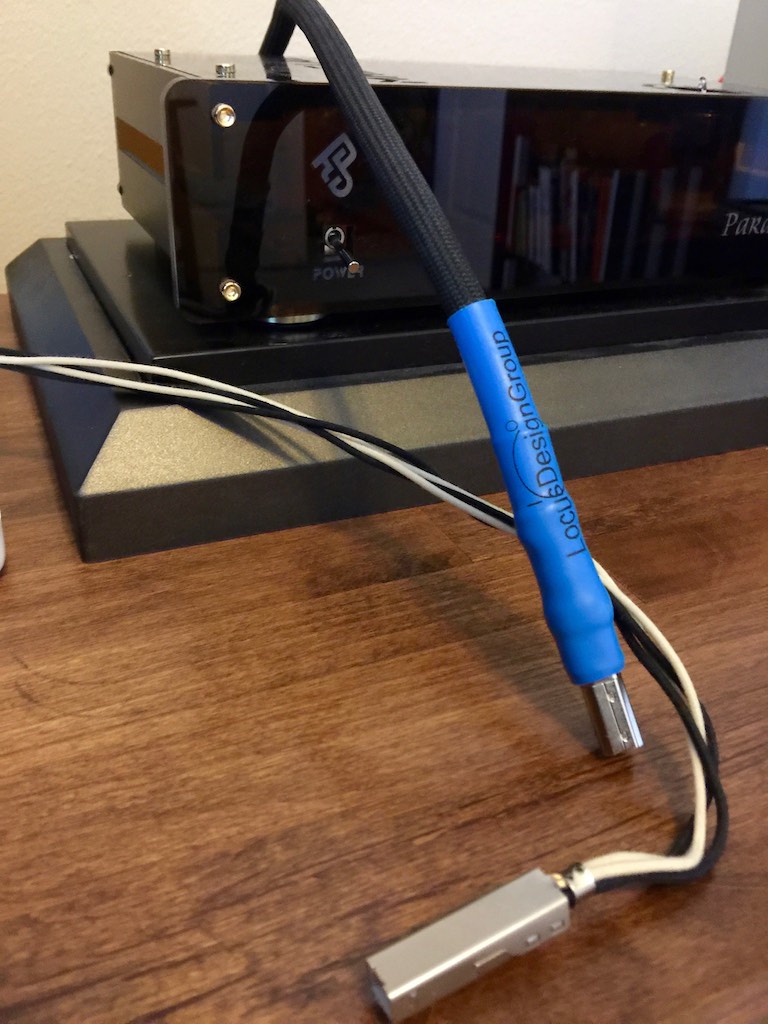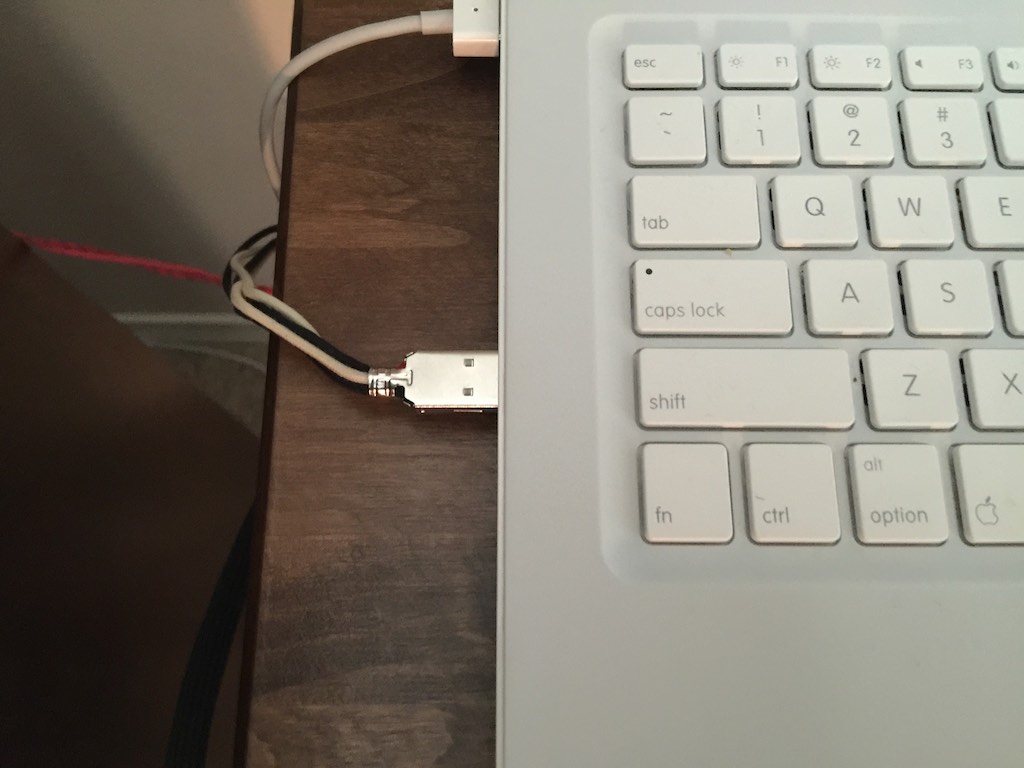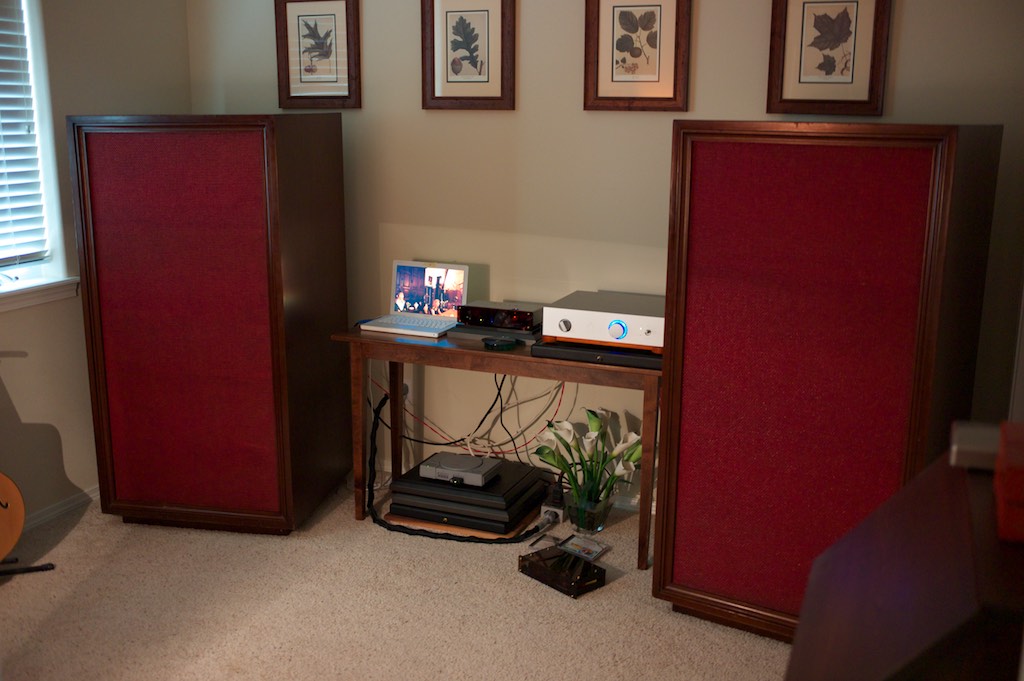As I reported yesterday, my first attempt at a USB interconnect didn't go so well:
"I also tried building a USB interconnect out of vintage guitar pushback wire (all the rage for re-wiring electric guitars for that beautiful ‘vintage tone’ experience), which is tinned-copper with a cotton cover, which reminds me a lot of the Western Electric WE24GA. I bungled my first attempt at it by not having the correct tip for my soldering iron, but now I’ve got an appropriately sized tip, so I’m going to give it another go, and will report back on the results."
For my first foray into building USB interconnects I ordered a couple pairs each of USB Type A & B connector plugs from Digi-Key Electronics, in particular the Assmann WSW Components A-USBPA USB Type A, and the Assmann WSW Components A-USBPB-N USB Type B.
For wire, I ordered 12-feet of Gavitt cloth-covered pre-tinned 22awg pushback wire ($7.29 USD) from The Art of Tone via Amazon. 'Pushback wire' is a reference to the cloth insulation that covers the wire, which easily pushes back to expose the conductor, making it very easy to work with, as no stripping is required.

USB type B connector with black & white pushback wire conductors, shown next the my Locus Designs Group 'Polestar' USB IC.
I tried using the tip that came with my Hakko soldering station, but the tip was just too big for the tiny connections on Type A & B USB connectors, and as a result I crossed the traces with solder, which rendered my USB interconnect inoperable. I ordered a new set of tips for my soldering iron, and used the smallest tip, and that worked just fine the second time around. The tiny connections make soldering a bit tricky, but it is doable.
Here's a link to the USB pinout arrangement for Type A & B connectors that'll help you get all the conductors connected in the right place. I found it handy to label the connectors' solder connection points with a fine permanent marker for reference while I soldered.
I got my DIY USB interconnect installed on my MacBook ...
... and Mhdt Paradisea+ USB DAC.
Then I listened back and forth a bit on the Maestro's VOTTs, comparing my DIY cable to the Locus Design Group Polestar, which is my all-time favorite USB cable.
My DIY pushback wire USB cable actually fared pretty well against my fave Polestar, and absolutely slaughtered a generic 'off the shelf' USB cable I had for comparison. The DIY pushback wire USB cable sounded rich, warm, and pleasant, but the Polestar still outperformed it by being more spacious and resolving, while still being very musical.
This DIY pushback wire USB IC experiment is very promising though, and I'll report back on it as it gets some more run-in time on it and let you know what happens.
It does make me wonder what a USB WE16GA or Belden 8402 USB interconnect might sound like, so maybe I'll have to give those a try at some point too. I know some of you have already done those, so please share your thoughts about the results if you have a moment.
¸¸.•*¨*•♫♪¸¸.•*¨*•♫♪¸¸.•*¨*•♫♪
Update: The 'pushback wire' USB cable has been playing since I wrote the post this morning and its really starting to sound gorgeous. Warm, rich, natural, colorful, with realistic timbre. These guitar guys going for 'vintage tone' in their classic electric guitars really know what they're talking about.
It turns out the my buddy Ron already knew about the 'pushback wire' & vintage tone thing for guitars. Ron's also a musician and has some beautiful guitars, and he told me that when he's doing restorations he always goes for the vintage pushback wire because it results in really beautiful tone in guitars.
It's pretty incredible that for less than $10 USD worth of parts you can make a USB cable that sounds this good. I really like what I'm hearing, and I think you'd be impressed too. Very musical, very satisfying. It's about tone, baby!
It also begs the question what the more spendy Western Electric WE24GA would sound like in this same application.
I'll keep you updated on what happens as I get more time on the pushback wire USB cable.
¸¸.•*¨*•♫♪¸¸.•*¨*•♫♪¸¸.•*¨*•♫♪
Update: I let the VOTT/SPEC system play music overnight to get some more time on the pushback wire USB cable, and man it is sounding good as I've settled in with a cup of coffee to give it a listen this morning.
The pushback wire USB cable was sounding a little closed in when I first put it in, but promising, and it has opened up nicely now. It is sounding more spacious now, and still has that gorgeously rich, warm, natural, and colorful presentation I was hearing from it yesterday.
This vintage-style pushback wire with its tinned copper conductor and cotton cover is all about tone. It's absolutely crazy that for about $10 USD of materials you can build a USB cable with this kind of gorgeous tone. It might not be everyone's cup of tea, but I suspect a great many of you would enjoy it quite a lot, at least I am!
I'll keep you posted with further thoughts as I get more time on the pushback wire USB cable.
Thanks for stopping by!

































